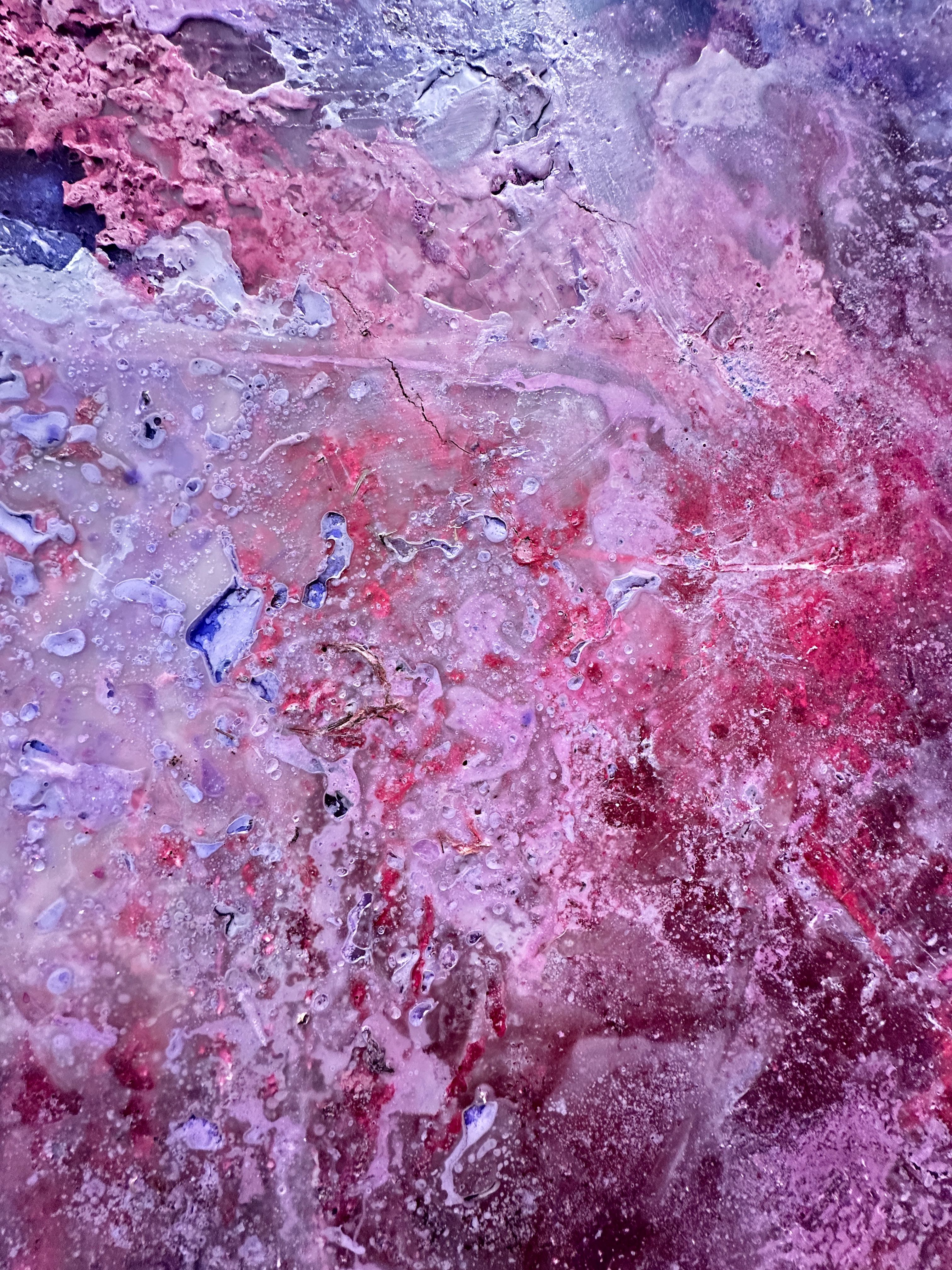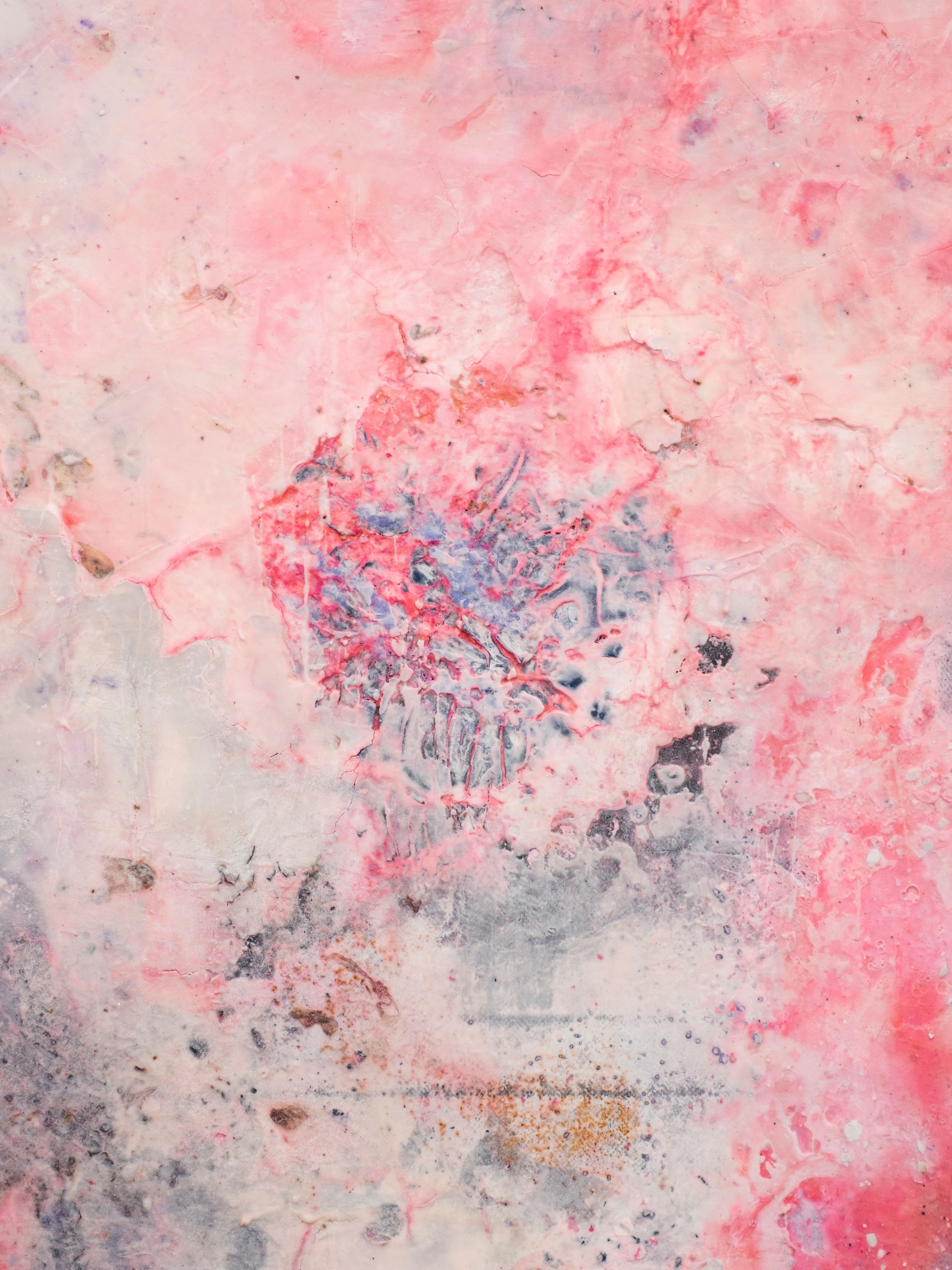
Winsor & Newton and Paul Smith's Foundation launched their International Art Prize last year in recognition of the need for peer-to-peer support for early career artists, offering an opportunity for them to work with leading curators and develop their international networks. As such, the judges are located in each of the cities where the winning artists are based, and are notable for their outstanding knowledge and market experience. This year, the Winsor & Newton x Paul Smith's Art Prize has returned to the exhibition space in Paul Smith’s flagship shop on Albemarle Street, with a show entitled Defining Your Point of View that is focused solely on female artists. The winners include rising German art star Silke Weißbach (representing Copenhagen), whose practice investigates painting as a living system in which natural and synthetic substances coalesce into new forms of material consciousness. Her unique work explores what she describes as the ‘metabolic and emotional intelligence of matter’ – investigating how biological and biotechnological compounds such as hyaluronic acid, collagen, and plant specimen interact to form responsive terrains. These abstract canvases thereby become a meeting point between body, mind and land, where transformation suggests a new relationship with the natural world. In this interview for House Collective Journal, the artist unpacks what she calls a visual language of ‘metabolic intimacy’ where painting becomes a site for sensing the porous relations between matter, technology, and the living world.
What would you say drives you creatively?
I’m interested in how our concept of nature has been shaped across different historical and cultural frameworks. I’m drawn to the narratives of where we come from, how world-views are formed, and how they influence the belief systems we hold today. A large part of this is about finding ways to reenter the ecologies we inhabit and to understand what happens when we begin to listen to our surroundings and are more attuned to them. And then there is also a very personal layer that drives me, which has to do with how we respond to trauma, sudden shake-ups, and moments of crisis — how the body copes with these extreme situations and how such experiences move through generations. A family event made me attentive to these emotional transmissions. It opened a deeper curiosity about feelings such as grief and love, and their different layers in general are interesting to me. And another element that runs through my work is the question of longing or maybe belonging. In German, there is a word that describes this more precisely: Sehnsucht. It relates to my lived experience of being uprooted, not only the feeling of being an expat but also a generational form of up-rootedness, something that reaches further back and is tied to place, history, and the shaping of territories.

Why are you drawn to explore the possibilities of painting as a living system? Please can you unpack that concept for us?
My methodology is grounded in material research and began during my Master’s at the RCA. I tried to find a new way to approach canvas and wanted to understand colour more from a materialistic view: where they come from, what histories they carry, what forms of spirituality or internal DNA shape them. I eventually left the canvas entirely and moved more towards 3D. I started with plaster mixed with pigments and created my own molds from baking and cooking equipment. I mixed in everyday organic ingredients that were part of my diet – chilies, blueberries, spirulina, pomegranate, and sugar. These ingredients were already in dialogue with my system, so bringing them into the work felt like an extension of that intimacy. I transformed these substances through heating, hydration, crystallisation — all kinds of chemical or biological reactions, and I was interested in processes. The mixtures turned into hybrid materials I didn’t even have names for; they behaved, mutated, dissolved, and changed in ways I couldn’t really predict. At that point, I began reading more about interspecies relationships and biological transformation — especially Lynn Margulis and her theory of symbiogenesis, where evolution happens through collaboration, cell fusion, and the merging of different organisms.

How did that investigation first begin to manifest as work?
Well, I ended up making a sugar sculpture series ‘Correspondence’, and I made them very large, body-like sculptures, and they start to drip and melt when exposed, but for me, it was more like painting, just in a 3D form. They were really sexy, alluring, but also abject. I had people leaking my sculptures. Many of those didn’t last long, so technology naturally entered my work. I started documenting different states and the process, and then pushed those experiments further in video-editing programs with filters and effects, which opened up new ways of transforming. I projected these digital transformations back onto the work, so all these shifts, formations, and collapses were translated back into the physical: ‘When We Collided, 2018’. And during the pandemic, I experimented more digitally. At some point, I chose to approach the canvas again because it offered a field where everything I had learned from the experimental phase could come together, with a clearer sense of outcome but still rooted in transformation. The scent is still present in the work. Fluids still drip over the studio floor; the paintings remain wet for long periods; surfaces decay, turn, shift, and settle very slowly until they eventually stop developing. The canvas acts less as a fixed surface and more as a membrane — porous, responsive, and metabolizing. The materials behave with their own agency; they resist, seep, crystallize, collapse, or stabilize in ways I can’t fully control. The work lives in the tension between matter and the living world, which can simply be humidity, time or evolution. So sometimes I feel like it controls me more, because matter is active: it remembers, reacts, transforms.
Your website talks about a visual language of metabolic intimacy between matter, technology, and the living world. How does that relationship work?
There is a moment within my process where all of these ingredients, technology, and the living world circulate through one another — where boundaries are porous, and everything is in exchange. In earlier works, the digital came in through video and scanning; now, I draw a lot on my iPad and transform process images of the painting, so everything is in constant exchange. I’m trying to understand how these digital gestures can return to painting without being too literal and still embody the character of a digital body. The mark making is different — the pen slides over glass, not paper – very slippery. Another very fresh work is Siren Emissaries. I’m working with simulations trained on coral-reef footage, underwater imaging, and ecological data to explore how nonhuman systems communicate, sense, and shift over time. I then also fed this simulation with images from techno events, as I was drawn to the energy that is created in these spaces – an emotional cocktail of heightened states and body fluids such as body sweat and saliva. These models behave like organisms too — and drift, dissolve, glitch, and reform data — and I am thinking about how to bring this back into painting. So in the end, things always come back to the canvas, as I feel this is the place where things can happen in a very concentrated and concise way. It’s a membrane – every work is informed by the last and will inform the next. It’s a cycle.

How would you describe your philosophical concerns as an artist?
I believe everything exists within a field of relation – bodies, environments, emotions, and histories. And I’m interested in how things are connected and how meaning circulates across different layers of experience, and how we shape one another through contact, attention, and sensitivity. At the moment, I read a lot of Indigenous literature and books on interspecies worldviews. Right now, I’m reading Waves of Knowing: A Seascape Epistemology by Karin Amimoto Ingersoll and Helm by Sara Hall. I am interested in oceanic literacy at the moment, and the idea that we evolved from water and how much of this knowledge we still hold in our bodies. And then I believe a painting can become a form of contact zone where you share this certain energy. Especially for me as an artist, it’s always interesting to see a painting I really admire in real life and how they used the materials. It always changes the whole perspective of the work. Sometimes, this feels frustrating, and it destroys the whole work for me, and sometimes it's more surprising. I assume it's because nowadays I consume mostly through Instagram, it's the first place and sometimes publication, but the real-life experience always hits different. So I always make sure to see a lot of work in real life.
What for you ultimately is the purpose of art in a broad sense, and how do you see your particular purpose as an artist?
I believe art is the only area that gives you the freedom to look into things from a very open perspective, and to connect ideas in ways that someone without that freedom wouldn’t be able to. I always knew I was going to be an artist. There was a lot of hesitation along the way and what-ifs, but once I decided, I went all the way. The ultimate purpose for me is that there was never anything else I wanted to do, and no other field gave me the possibility to think so freely and in so many different directions. I’m drawn to the abstract because it calms me, even though I do love landscape paintings as well. But landscapes were like the early messengers of abstraction – you see it in Turner, dissolving form into weather and atmosphere, or in Caspar David Friedrich, where the landscape becomes emotional rather than literal. And painters like Hilma af Klint or Ithell Colquhoun pushed this even further, bringing the focus away from representation and more towards spirituality – colour, flow, energy, tension. Abstraction also carries a form of uncertainty, and surrendering to that feels right to me because it helps me to navigate the uncertainty we are living in anyway.
DEFINING YOUR POINT OF VIEW exhibits until the 12th of January, 2026 at Paul Smith. Find out more about the artist here.
Images (Top to bottom): Portrait of Silke Weißbach by Rita Silva, 2024; Anma, 2025, Oil; Cochineal, DragonsBlood, Cornflowers, Wax (detail); HighOnYou, 2024 (detail), Acrylic, Agar, Cochineal Pigments, Soap, sheaButter, PVA, HotPinkInk, Wax, MagicBells, KalanchoeDaigremontiana, Comfort, Lily, Riceflower; One More Rush, 2025 (detail). Cochineal, Collagen, Comfort, Estrogen, Glycerin, HyaluronicAcid, Ink, Lactose, Pigments, PlantSap, Progestin, Starch